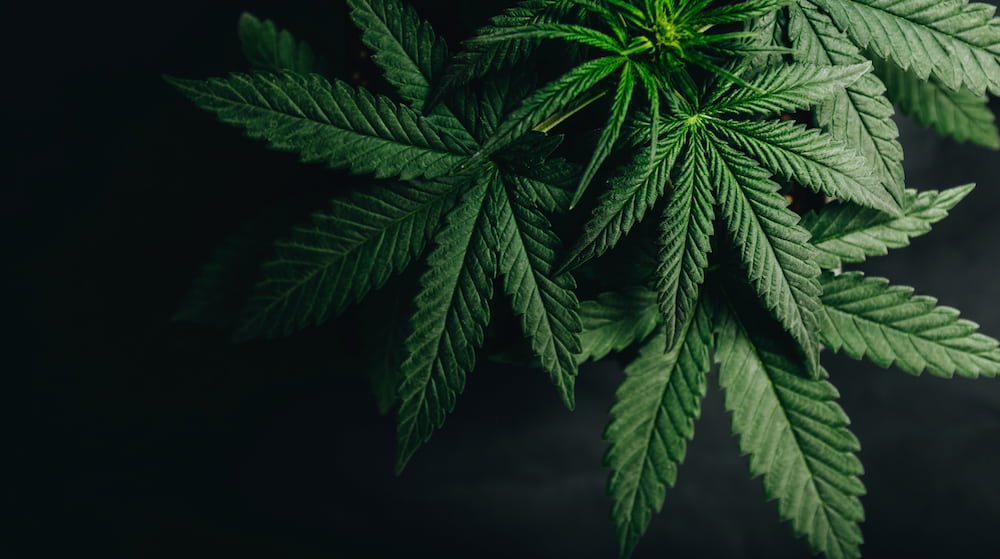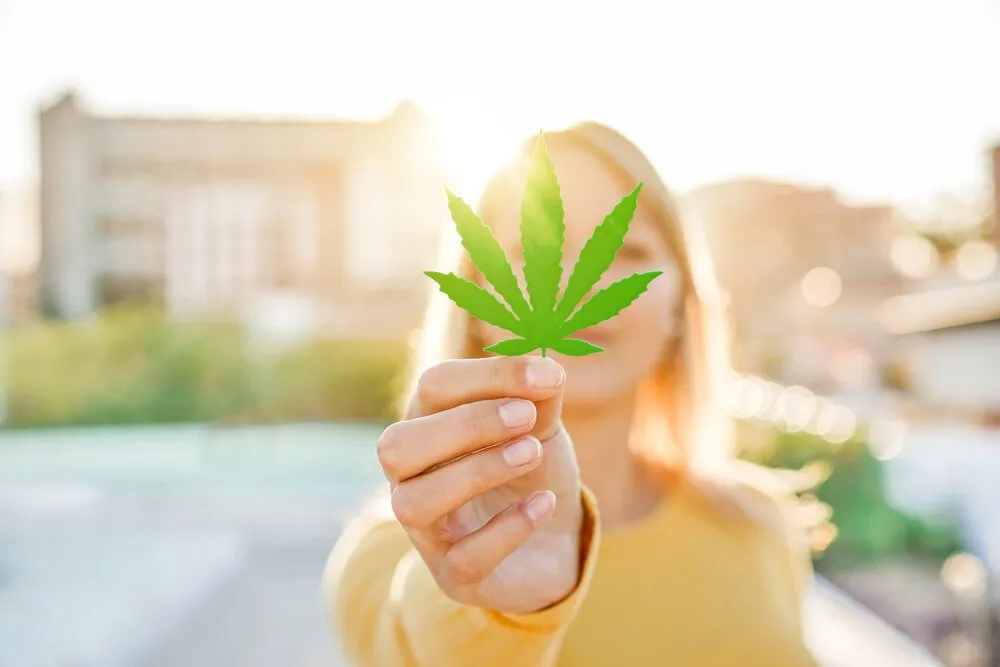
Is Marijuana a Stimulant Or Depressant? Everything You Want to Know
The most widely used illegal substance in the US is marijuana, which is also a contentious drug. Headlines are dominated by discussions about whether or not it should be legalized for recreational use as well as its efficacy as medicine. What it is, though, is the subject of another argument.
Based on their effects, psychoactive drugs are divided into four major groups.
However, every person reacts to marijuana in a different way. Is Marijuana a Stimulant or Depressant?
Please continue reading for more information.
Table of Contents
Is Marijuana a Stimulant Or Depressant?
Is cannabis a stimulant or a depressant? The truth is that marijuana’s position within these categories isn’t as obvious as you might think. Individual differences in effects and the effects of various strains exist.
Marijuana as a Depressant
Cannabis affects the nervous system and brain function, causing your muscles to relax and your nerves to calm down. THC tolerance develops over time, which means you would need to use more of it at once to experience the same effects. Cannabis use over a long period of time can lead to dependence.
Marijuana as a Stimulant
The opposite is true for stimulants, who raise heart rate and blood pressure. Because it increases your alertness, vigor, and mood, especially right after using it, cannabis is occasionally referred to as a stimulant. It is possible to become addicted to marijuana’s mood-lifting properties.
Marijuana as a Hallucinogen
Hallucinogens lead to erroneous perceptions of things, events, or sensations. There is a common misconception that cannabis causes hallucinogenic effects, but this is untrue. To be clear, hallucinations like time distortion can happen after consuming marijuana.
Therefore, the true answer to “is cannabis a depressant or a stimulant” is that it depends on the person and the strain. While some people feel sleepy and relaxed, others feel more awake and alert.
Interactions With Other Substances
It is common practice for some people to mix marijuana with other drugs, such as cocaine, in order to bulk up the original product and increase sales. For the same reason, other drugs that are sold by weight might also be laced; for instance, it’s not unusual for drug dealers to mix cocaine with flour. Some people lace marijuana to change its psychoactive properties.
PCP
To make marijuana more potently psychoactive, many people add PCP, a dangerous dissociative drug. Although it is not unusual for someone to mix PCP with cannabis without disclosing it to anyone, most people who sell this concoction of drugs don’t make an effort to hide their actions. Wet weed, superweed, fry, and dusted weed are some of the names for marijuana that contains PCP.
PCP-laced cannabis can lead to deleterious effects, including:
- Respiratory issues
- Seizures
- Suicidal behavior
- Aggression
- Delusions
- Hallucinations
- The potential to develop long-term neurological conditions
Heroin
Those who smoke marijuana laced with heroin tend to develop potentially severe symptoms, including:
- Extreme lethargy and relaxation
- Confusion
- Reduced heart rate
- Reduced breathing rate
A person may even become unconscious as a result of the double-drug effect. It goes without saying that heroin itself is dangerous, and using too much of it can be fatal. There is a higher risk of overdose or other serious side effects for those who don’t regularly use the drug because they will have a much lower tolerance to it than those who do.
Cocaine
In order to produce a distinct set of psychoactive symptoms, people frequently lace cannabis with cocaine, including crack cocaine. A different effect is produced when the sedative qualities of cocaine are combined with the sedative qualities of marijuana. Although there have been sporadic news reports of it happening, it is most frequently done for personal use and is not typically a drug combination that is sold together.
When someone smokes marijuana and discovers they have unintentionally consumed both cocaine and marijuana, they often experience a number of unpleasant side effects. Even without marijuana, cocaine is a harmful drug in and of itself. It can lead to several harmful psychological and physical symptoms in regular users, including the development of:
- Paranoia
- Seizures
- Cardiovascular issues
- Hallucination
LSD
People frequently add LSD to marijuana because it has strong effects even in small doses.
Smoking cannabis and LSD usually results in mild side effects because the heat degrades the drug. However, some people regularly dip the end of a cannabis cigarette so that it passes through the LSD tab that is dissolving, which causes the body to absorb both substances and has a strong hallucinogenic effect.
It is crucial to remember that LSD is incredibly powerful; even the smallest doses can cause vivid hallucinations for up to 12 hours at a time. Though LSD isn’t considered to have severe side effects on its own, people who aren’t aware they are taking it have an elevated risk of having an emotionally disturbing “trip” that can lead to poor judgment and accidental consequences.
Meth
People occasionally combine marijuana with methamphetamine, also known as crystal meth, a potent stimulant. The combination of these two substances can produce incredibly potent effects, including:
- Delusions
- Hallucinations
- Confusion
- Potential seizures in higher concentrations
Ketamine
Occasionally, some people combine marijuana and ketamine, a common club drug. Ketamine use produces a number of dissociative and stimulant effects that, like those of other drugs, can be dangerous to a person who is unaware they have taken it. Ketamine can also cause severe dehydration and overheating.

What Are the Main Drug Types?
Marijuana doesn’t seem to fit into any of the major drug categories, which contributes to the confusion about which drug category it belongs to.
Drugs classified as psychoactive are divided into broad categories based on their effects and more focused categories based on their other characteristics, such as their chemical makeup. Cannabis seems to fall under several headings at once. The four major categories of psychoactive drugs are:
- Depressants are medications that calm down the nervous system activity in the brain. A few examples of depressants are alcohol, benzodiazepines, and other prescription sleep aids. Gamma-Aminobutyric Acid (GABA), a chemical messenger in your nervous system, is usually affected by them. You experience sedation, drowsiness, slowed cognitive function, loss of motor control, and other effects of a suppressed nervous system when this chemical’s effectiveness is increased.
- Central nervous system stimulants are, in many ways, the chemical opposite of depressants. By influencing dopamine, a chemical linked to reward, motivation, and alertness, stimulants cause the nervous system to become more excitable. Coke, amphetamines, and methamphetamine are examples of stimulants.
- Opioids: Despite the fact that some people lump opioids in with depressants because they share some of the same effects on the nervous system, opioids operate in the brain in a different way. They bind to opioid receptors and directly affect your nervous system because they share a chemical similarity with your own naturally occurring endorphins. Opioids relieve pain and also result in sedation, vertigo, and profound relaxation. Opioids include heroin, oxycodone, fentanyl, and other prescription opioid painkillers.
- Psychedelics are psychoactive substances, also known as hallucinogens, that induce an altered state of consciousness. LSD, peyote, psilocybin mushrooms, and other drugs fall under this category. There is a lack of knowledge about how psychedelics function in the brain and how they may differ in each person.
The effects of marijuana appear to fall under a variety of different headings. Depending on a variety of variables, different users of the drug have utterly different experiences. Your individual physiology, the strain of cannabis you consume, and the dosage you take can all affect the effects you feel.
How Marijuana Works
Because of how each drug interacts with your brain and nervous system, they have varying effects. The way they change your brain’s chemical messaging system will determine their effects, whether they directly or indirectly affect chemical receptors. Because of this, it’s crucial to comprehend how the brain processes cannabis in order to comprehend why it has so many peculiar effects.
Tetrahydrocannabinol (THC), one of the active chemicals in cannabis plants, is the one that has psychoactive effects. THC is a cannabinoid, a substance that interacts with cannabinoid receptors in the brain. Your brain’s cannabinoid receptors are normally activated by the neurochemical anandamide.
Anandamide’s effects on the brain are still poorly understood, but they appear to be related to pleasure, eating habits, pain relief, and even memory suppression. When THC binds to these same receptors, it can cause the following effects:
- Euphoria
- Altered perception of time
- Increased appetite
- Memory loss
- Anxiety
- Panic
- Hallucinations
- Psychosis
- Sedation
- Pain relief
- Nausea suppression
- Stimulation
Some of these effects are strikingly similar to those that anandamide produces. The effects of THC are more pronounced than those of typical anandamide due to its high potency. It may be more difficult to recall specific details while you’re high because THC can interfere with normal chemical communication when it binds to receptors in your brain.
What Are THC and CBD?
Thc
Tetrahydrocannabinol, or THC, is a chemical in marijuana that is primarily responsible for its psychological effects. It functions very similarly to the cannabinoid chemicals that the body naturally produces, according to the National Institute on Drug Abuse (NIDA). In particular regions of the brain, there are cannabinoid receptors.
THC attaches to these receptors and activates them, which affects these areas of your brain:
- Memory
- Pleasure
- Thinking
- Concentration
- Coordination
- Sensory and time perception
Cbd
Cannabidiol, known by its chemical name CBD, is the second most active component in marijuana. It comes straight from the hemp plant, a close relative of the marijuana plant, despite the fact that it is a crucial component of medical marijuana.
While CBD is one of the hundreds of marijuana parts, it does not cause a “high.” According to the World Health Organization, “…there is no evidence of public health-related problems associated with the use of pure CBD.” In the majority of the U.S., CBD is readily available. but its exact legal status is constantly changing.
Is Marijuana Dangerous?
Many marijuana proponents claim that marijuana is relatively risk-free because it doesn’t have a chemical dependence and isn’t likely to produce harmful overdose symptoms. Despite not being as harmful as some other drugs, it still has side effects. When taken in high doses, its immediate effects can result in memory loss, hallucinations, delusions, and psychosis.
The development of the brain can be impacted by prolonged use, particularly in younger users. It can impair cognition, cause memory problems, hinder learning, and have other negative effects on critical functions if used frequently by individuals whose brains are still developing.
In people who are predisposed to disorders like schizophrenia, marijuana use has been linked in other studies to psychosis.
Use of potent marijuana on a regular basis can lead to psychotic symptoms. Tetrahydrocannabinol (THC), the chemical that gives illegal marijuana its high, is frequently present in high concentrations. Marijuana today contains more THC than it did in the past because it enables drug dealers to ship more valuable goods in smaller containers. Marijuana with a high THC content may be riskier because THC has also been linked to psychosis.
Medicinal Uses for Marijuana
More than 3,000 years have passed since the first recorded use of marijuana as medicine. The use of medical marijuana was permitted in more than half of the US as of the beginning of 2017. The use of the drug recreationally is now permitted in a number of states.
THC can be taken out of marijuana or manufactured, as is the case with the FDA-approved medication dronabinol. Dronabinol is used to treat or prevent the nausea and vomiting that are common with cancer medications. In addition, the U.S. claims that it is used to increase AIDS patients’ appetites. Medical National Library
All Natural
Some people are claiming marijuana as a better drug than prescription pills because it is “all-natural.” That might not be entirely true, though. Just because something is considered “natural” doesn’t mean it’s healthy. Poison ivy grows in the ground and is natural, but that
Marijuana Edibles and Overdose
In states where marijuana is legal, overdosing has made edibles, or foods containing THC, a problem. Due to the fact that many people consume a full cookie (or other edible) rather than a smaller portion, edibles can occasionally result in overdose. Younger people or those who don’t want to inhale it as smoke find it more appealing because it is simpler to swallow an entire cookie.
The effectiveness of edibles is very high. As a result, the drug’s effects when ingested through the digestive system can be stronger and last longer. A THC inhalation’s effects last 45 minutes to a few hours, whereas an edible’s effects can last for six to eight hours. So, the likelihood of an overdose-related trip to the ER is higher when using edibles.
Can You Get Addicted to Marijuana?
Yes, marijuana use can progress to the stage of problem use known as marijuana use disorder. In extreme cases, this manifests as addiction. According to recent studies, 30% of marijuana users may have a marijuana use disorder of some kind. Users who begin using before the age of 18 are 4–7 times more likely than adults to develop a use disorder.
Cannabis use disorders are frequently linked to dependence, which occurs when a person experiences withdrawal symptoms when using marijuana no longer. Withdrawal symptoms peak in the first week after quitting and can last up to two weeks. Symptoms include:
- Irritability
- Sleep difficulties
- Decreased appetite
- Cravings
- Restlessness
- Physical discomfort
Marijuana Addiction
Even though the drug use interferes with many aspects of the user’s life, addiction occurs when they are unable to stop. According to studies, 9% of marijuana users will develop an addiction. If someone starts using it in their teen years, the percentage increases to around 17%.
Is Treatment for Marijuana Addiction Available?
The long-term effects of marijuana use disorders may be less severe even though they resemble other substance use disorders on the surface. Most adults seeking treatment for marijuana use have tried to stop using the drug more than six times and have used it almost every day for more than ten years.
Furthermore, dual diagnosis refers to the psychiatric disorders that marijuana use disorders in adolescents frequently co-occur with. They might also have drug or alcohol addictions to other substances, like cocaine. Treatments that have been successful include;
- Cognitive-behavioral therapy
- Contingency management therapy
- Motivational enhancement therapy
Medications for Treatment
No drugs have been given FDA approval to treat marijuana use disorder. Some studies are looking at drugs that help with sleep because sleep issues are frequent in marijuana withdrawal. Supplemental substances and substances known as FAAH inhibitors, which lessen withdrawal symptoms by delaying the body’s own cannabinoids’ breakdown, are other substances being studied.
Final Words
Cannabis is a complicated drug that has many different effects on users. Depending on the strain and the chemical interaction it has with the user’s body, marijuana can occasionally act as both a stimulant and a depressant. The user’s attention span, capacity for long-term memory storage, and psychomotor abilities necessary for activities like driving a car are all generally impacted by marijuana use. In people who may be more sensitive to its effects, long-term or even chronic marijuana use has been linked to a potential onset of psychotic episodes. It can also cause irreparable damage to brain regions, altering normal mental functioning.
Since marijuana contains more than 400 active compounds, researchers are still looking into how these compounds relate to the direct effects that marijuana has on users. However, some studies contend that marijuana has a stronger depressant effect, finding that marijuana users are more likely than nonusers to experience depression. While specific effects of marijuana are still being studied, marijuana use alters the body’s natural state of being, which can always impair normal functioning.
Please POSTPONE A COMMENT if you have any queries.
Many thanks for reading.


